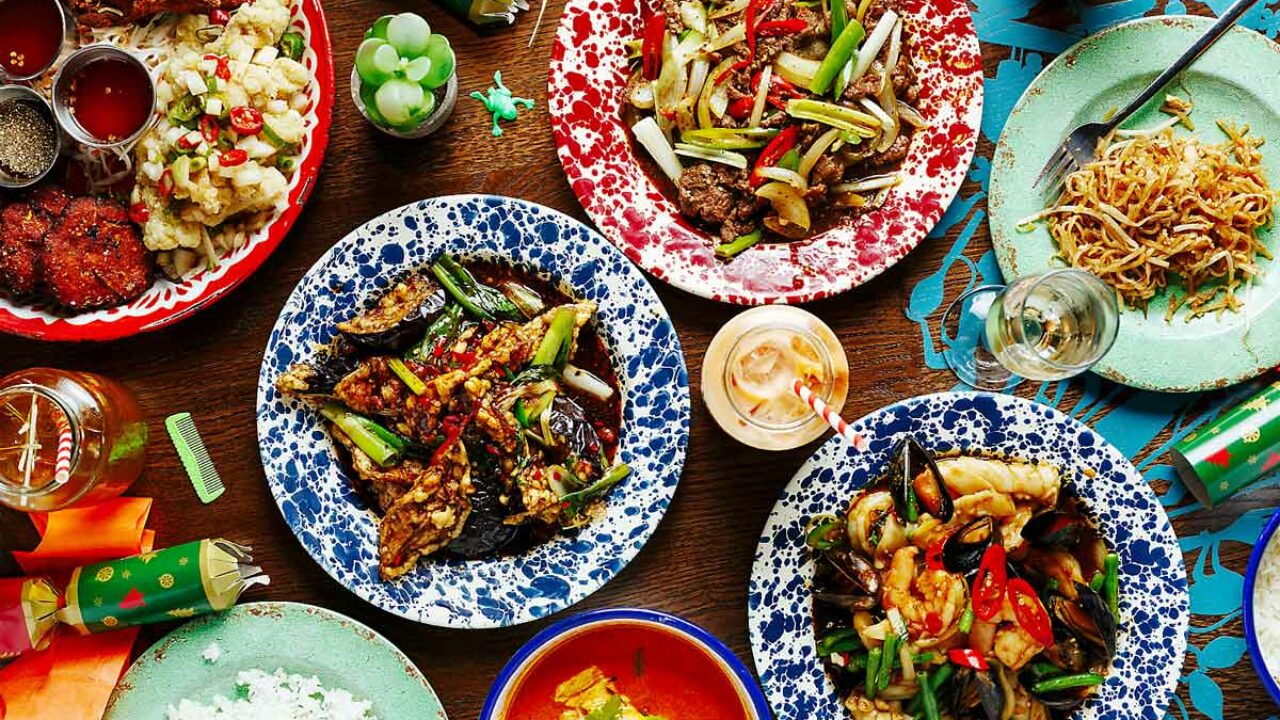How to Combat Seasonal, Staffing & Supply Chain Challenges
.png?width=1800&height=900&name=iStock-1469726958-1%201%20(1).png)
The restaurant industry’s health continues to ebb and flow as we approach the final few weeks of 2021. On the positive side, sales are the strongest they’ve been since before the COVID-19 pandemic. In July 2021, eating and drinking establishments saw sales of $72.2 billion — 9.1 percent above the February 2020 pre-pandemic sales volume of $66.2 billion.
But in-store guest traffic has become increasingly unpredictable, and many restaurant owners and operators are concerned about bringing back on-prem customer loyalty while maintaining the off-prem revenue they established throughout the pandemic.
With competing priorities (and financial risks!), how do you decide what to address first? And why?
- Do you change suppliers? → But what if that negatively impacts the quality of the menu?
- Do you reduce the items on your menu? → But what if you remove something that customers find great value in?
- Do you cut back on a service style because of a new or reduced workforce? → But what about the risk to revenue?
As fun as juggling is, when you map customer expectations to your actual brand performance, there is no room for missing the mark this season. And looking at your sales data or food and labor costs to drive decision-making might get you through the week but it won’t fix the issues ultimately blocking your success.
In this blog, we’ll explore three strategies operators can adopt to move with greater agility and officially replace the ‘do more with less’ mantra with ‘do what works – but better’.
Optimizing Your Menu for the Available Supply Chain
Restaurant and hospitality businesses have faced ingredient shortages for a significant portion of this year. Labor shortages at some of the largest suppliers in the U.S. have impacted the supply chain, making items like pork ribs, bacon, and chicken wings harder to come by. In fact, Sysco Corp., the largest wholesale food distributor in North America, is even turning customers away in areas where the company simply can’t fulfill orders effectively.
Sysco recently told Forbes that restaurants can expect price hikes on goods like chicken, pork, and paper products used for to-go packaging. In particular, the price of chicken rose rapidly in 2020 — the price per pound for whole chicken rose from $1.59 in June 2019 to $1.75 in June 2020. That represents a 16-cent increase, or 10 percent year-over-year. To put that in perspective, the price in June 2018 was $1.51, meaning the price increased by just 8 cents over that time period. Restaurants need to be able to quickly react to these shortages.
WHAT TO DO
Sample a new supplier in a test market. With a control group, you can measure any changes in customer satisfaction of that specific menu item to determine if the new budget-friendly poultry supplier will be able to hold up to guest expectations. To de-risk this test, ensure you’re capturing dish-level data in real-time so you can get ahead of any negative trends or quickly roll out what’s working across all locations.
If you know how to optimize and simplify your menu effectively, you can spin a limitation like supply chain issues into an opportunity.
Retain Your Team Through Development
The restaurant industry isn’t just facing a supply chain shortage — there’s also a labor shortage to overcome. Unemployment rates for eating and drinking places sat at more than 8 percent in July 2021, significantly higher than the overall U.S. rate of 5.4 percent, according to the Bureau of Labor Statistics. For the first time, BLS data shows that the average wage of restaurant employees rose above $15 an hour.
Aside from higher compensation, training and development opportunities are effective incentives for your employees to stay at your business. And today’s workforce gets the most value from micro-learning, where skills can be taught in burst-capacity. No one appreciates quick wins more than an unseasoned team member or a manager stretched for time.
WHAT TO DO
If you see a specific market or brand underperforming, you have to drill down into location and shift-level details to see what’s driving that performance. Remember, the people behind your brand are humans that make mistakes, but we all want to feel valued, heard, and recognized. Here’s how you help: categorize issues by what is within your team’s power to control. Quantify the impact of each issue. Tackle the most pressing issues first. Acknowledge the little wins. Celebrate the long-term gains. Sounds easy enough, right?
The reality is, the impact of a small mistake, when overlooked or undetected, can have a lasting impact on the success of that server, shift, chef, or dish. If you rolled out a new beverage, but the BOH team wasn’t properly trained on the recipe, how many shifts (and customers) will pass you by before you catch wind that the drink was underperforming? Once you know there’s an issue, how do you get to the root cause? Again, sales data might show you what isn’t selling well. But it won’t tell you why.
Use the ‘why’ behind mistakes or issues as a collective advantage to strengthen the talent of the team, their experience with your brand, and what you’re able to deliver for your customers.
Combat Food Inflation with Menu Pricing
Often, ‘best sellers’ are defined by how frequently they get ordered, leaving restaurant operators fearful of ever messing with what looks like a ‘recipe for success’. Yay POS data! But we all know better than that. Unless you’re capturing the perceived value and quality of an item, you won’t know what to do about it.
The restaurant industry is facing the steepest inflation in 10 years, causing brands across the country to raise prices in an effort to offset higher expenses. According to Labor Department estimates, prices increased approximately 4.2 percent in June compared to a year earlier.
Major chains are beginning to implement price hikes on menu items and cut back on promotions that enticed diners during the pandemic. This is a sound strategy if executed and monitored properly, and one that operators can implement and test quickly to determine if any changes are viable for the long term.
“Part of the calculus right now is there’s probably some appetite of consumers to pay whatever because they haven’t been out for a while,” David Henkes, senior principal industry researcher at Technomic, told Bloomberg. However, the number one mistake restaurants make with adjusting pricing is basing decisions on sales data and food costs.
WHAT TO DO
Look at how customers value certain menu items over others. If the perceived value of a dish is off-the-charts good, that’s a quick opportunity to spike the price without any negative impact to sales. Poor value scores? Do the opposite. By measuring menu performance against customer expectations, operators can see if menu pricing tests are working, gauging how guests feel about the value of the meal, the portion size, and much more. Armed with these insights, you can iterate and adapt your dishes and their pricing until you achieve those financial wins and combat food inflation.
The Secret is in the ‘Why’ Behind Your Sales
Having the ability to quickly identify how team development, menu improvements, and concept-testing impacts your sales will keep you focused on doing the right work in every store, every shift; for every server, every dish. And it all starts with asking the right questions: how happy are my guests, and why?
Visit Smart Actions to learn what matters most to your customers, and what actions you and your team can make to take control of the bad and do more of the good.
Share this:
Subscribe to our Newsletter
You May Also Like
These Related Stories

How to Ensure and Sustain Restaurant Profitability

Why poker face diners might be the true path to guest satisfaction
